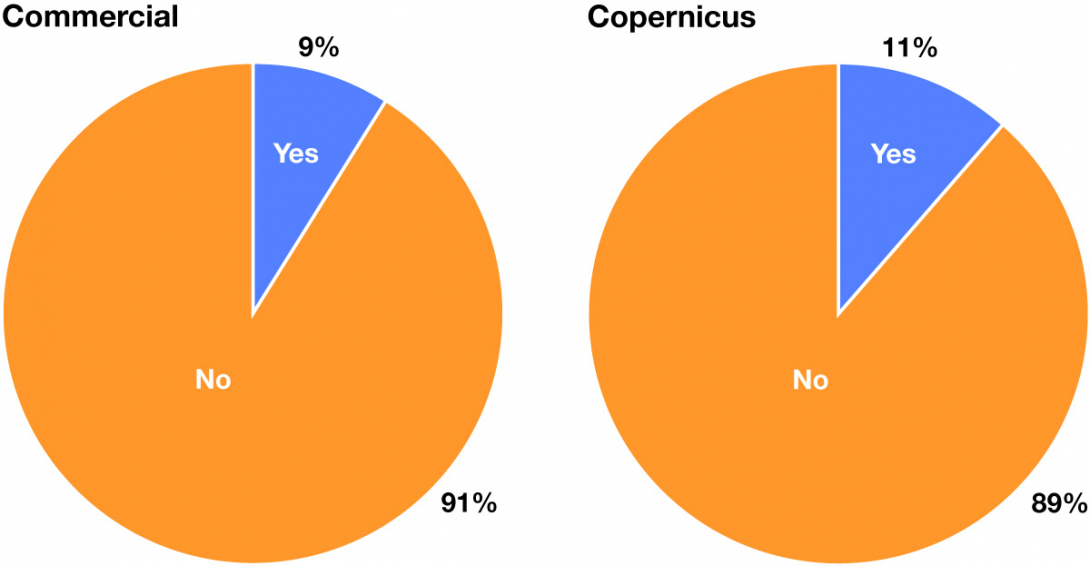In recent years, ECMWF has introduced some significant changes to the support services it provides to its users. To better understand the impact this has on ECMWF users and how this may affect their overall satisfaction with ECMWF support services, two surveys were conducted in 2022: one for ECMWF commercial licensees and the other for users of the EU‑funded Copernicus Atmosphere Monitoring Service (CAMS) and the Copernicus Climate Change Service (C3S), which are both implemented by ECMWF. Both surveys were open for a two-week period in May–June 2022.
Outline of the surveys
ECMWF commercial licensing covers real-time data delivery, archive access and web data products for commercial customers, but also licences covering the distribution of data to national meteorological and hydrological services (NMHSs) outside ECMWF’s Member and Co-operating States and to research projects. In the survey for commercial licences, over 380 existing licence holders spanning all licence types were contacted and asked seven core questions. These questions focused primarily on the service channels new and existing licensees were using for purchasing data, what they thought of documentation related to their licence (such as the Products Requirements Catalogue and ECMWF Data Store documentation), and what support channels they were using for general queries and issues. For the CAMS and C3S survey, over 66,500 distinct users were contacted, all of whom had interacted with the Copernicus Climate and Atmosphere Data Stores (CDS and ADS) and/or support channels (Knowledge Base, Forum, Support Portal) in the previous 15 months. A set of five core questions, primarily focused on the support channels, were put to users to collect their reaction and satisfaction. Both surveys asked for feedback regarding any changes they had perceived over the last 12 months, what changes they would like to see, and any general comments to help improve support services.
The response rate was 34 of over 380 commercial licensees (about 9%) and almost 1,300 of over 66,500 CAMS and C3S users (about 2%).

Main results and recommendations
The overall result was positive for both surveys, with a high amount of praise and constructive feedback for the support services, paving the way for further improvement. Significant changes (such as the retirement of support email addresses) were noticed by some but more crucially were not perceived as deterrents from getting support. Following analysis of the results, a number of recommendations have been derived. These recommendations will help refine the shape of the Support Services, applications and various support channels to better serve their users.
For ECMWF commercial licensees:
- Reinforce the use of the ECMWF Support Portal as the primary method of reaching out to the Data Support Team dedicated to commercial licensees.
- Improve the ‘ease of use’ of applications and provide links to help discover documentation and examples.
- Enhance the availability of services and applications to different licensees via a ‘Welcome Pack’. Welcome Packs also to include troubleshooting material to encourage users to resolve common issues themselves.
For CAMS and C3S users:
- Prioritise improving the Knowledge Base, in particular with enhanced accessibility for novices by introducing levels of documentation.
- Improve Forum functionality for greater usability (dedicated platform and service promotion).
- Implement and promote the Virtual Assistant on the CDS to facilitate smart integrated support journeys.
- Encourage synergies between Training and Support services to improve accessibility of training materials through support.
Conclusion
After the surveys, there is a better understanding of the impact of the changes that have been implemented over the past few years on users and their satisfaction. In future, a communication campaign could help yield a higher response rate from users contacted. Among the survey responses there were many useful comments, which will help the services evolve.
